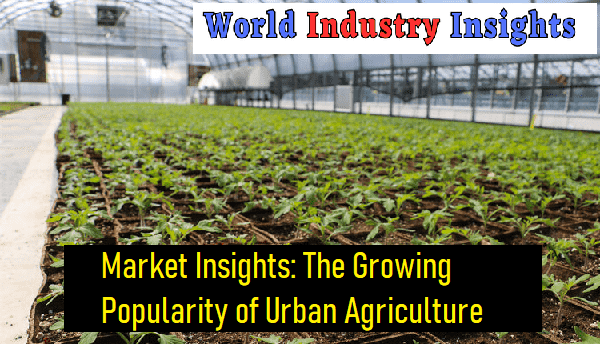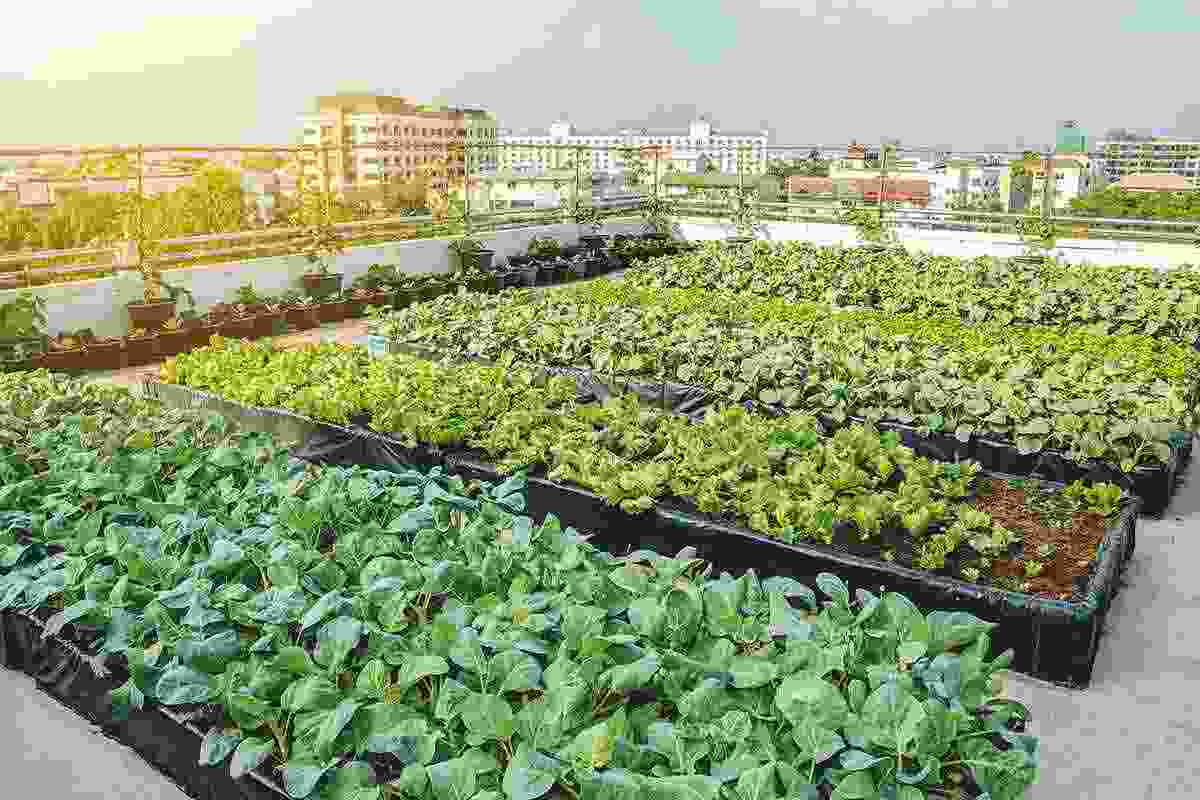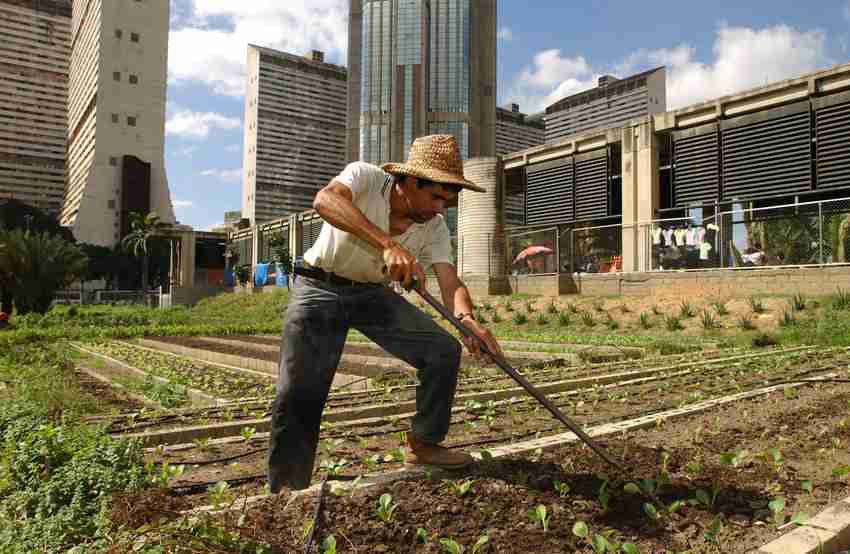Popularity of Urban Agriculture: The juxtaposition of lush green plants against the backdrop of a concrete jungle creates a harmonious image, one that’s becoming increasingly prevalent as urban agriculture takes root in cities around the globe. Urban agriculture, succinctly put, is the practice of cultivating, processing, and distributing food within a city. By integrating the agricultural supply chain into urban areas, it seeks to provide sustainable solutions to the challenges that burgeoning urban populations pose to food security, environmental sustainability, and social cohesion.
The Rise of Urban Agriculture
At first glance, farming in cities seems like a counterintuitive notion. Yet, urban agriculture has been on a meteoric rise in recent years. This escalation is driven by several factors. Escalating concerns over food security and environmental sustainability are nudging more urban dwellers to embrace farming. Coupled with increasing urbanization and population growth, these factors are helping transform the urban agriculture scene.
Research from the Food and Agriculture Organization of the United Nations (FAO) estimates that 800 million people worldwide engage in urban agriculture, indicating an undeniable upward trend. Urban farming is not a fad, its a transformational movement reshaping the landscapes of our cities.
Benefits of Urban Agriculture
Environmental Impact on The Growing Popularity of Urban Agriculture
A greener city is a healthier city. Urban agriculture offers a host of environmental benefits, including reducing the carbon footprint of food production and distribution by minimizing transportation. It enhances air quality by acting as a sink for carbon dioxide and urban heat, effectively mitigating the urban heat island effect. Moreover, with the correct methodologies, urban farming can conserve precious water resources, employing less water than traditional agriculture.
Economic Advantages
The economic advantages of urban agriculture are multifaceted. Local job opportunities burgeon as a result of the demand for urban farmers and marketers. Additionally, urban agriculture stimulates the local economy, circulating money within the city. An often overlooked aspect is the reduction of food transportation costs, leading to more affordable fresh produce.
Social Benefits
The social implications of urban agriculture are profound. Community farms foster a sense of belonging and cooperation among city dwellers, building strong, resilient communities. Access to fresh, healthy food, often a luxury in the concrete maze, becomes a given. Urban agriculture also enhances food security in urban areas, countering the reliance on imported food.
Types of Urban Agriculture
Rooftop Gardens
Rooftop gardens bring the verdant expanse of a farm into the heart of the city. By transforming underutilized rooftops into productive green spaces, these gardens offer a smart solution to the spatial limitations of cities. They’re not without challenges, though – structural issues, accessibility, and climatic extremities are some hurdles that rooftop gardeners need to overcome.
Vertical Farming
Vertical farming, the practice of cultivating crops in vertically stacked layers, is a promising solution to land scarcity in urban locales. With potential benefits including high crop yield and efficient use of resources, vertical farming is increasingly being adopted. However, high setup and operational costs, along with energy consumption, are limiting factors to consider.
Community Gardens
Community gardens, plots of land gardened collectively by a group of people, are gems of social cohesion and community development. They transform vacant lots into verdant spaces, encouraging individuals to participate in sustainable food production while promoting community interaction and engagement.
Indoor Farming
Indoor farming entails cultivating crops in controlled environments, leveraging technology to optimize growth conditions. This method allows for year-round cultivation, irrespective of external weather conditions, and increases yield efficiency in Indoor farming The potential for indoor farming is vast, especially as advancements in technology drive efficiency and reduce operational costs.
Urban Agriculture Techniques and Practices
Hydroponics
Hydroponics, the science of soilless plant cultivation, optimizes water and nutrient use, leading to faster plant growth and higher yields. However, it requires meticulous nutrient management and initial investment costs can be prohibitive.
Aquaponics
Aquaponics combines hydroponics with aquaculture, creating a symbiotic environment where fish and plants grow together. The system reuses nutrient-rich water from fish tanks to feed the plants, offering a sustainable and efficient farming solution. However, it requires careful management to ensure both plant and fish health.
Aeroponics
Aeroponics, a process that grows plants in an air or mist environment without the use of soil, ensures nutrient absorption efficiency and reduces water and space usage. However, the setup is technologically complex and requires constant monitoring.
Permaculture
Permaculture design emphasizes creating sustainable and self-sufficient ecosystems. This approach in urban agriculture can create spaces that are both productive and conducive to biodiversity, enhancing urban ecological health. However, implementing permaculture in urban settings may require a rethinking of urban design principles.
Urban Agriculture Challenges and Solutions
Limited Space
Limited space is a ubiquitous issue in cities. Innovative solutions like vertical and compact farming techniques help optimize available space. Cities are increasingly converting vacant lots, rooftops, and balconies into productive farms.
Lack of Knowledge and Skills
Farming, even at an urban scale, requires knowledge and skills. Educational programs, resources, and training initiatives targeting urban farmers can ameliorate this issue.
Access to Resources
Access to land, water, and seeds can be challenging for urban farmers. Collaborative efforts with local authorities and organizations can help address these challenges, ensuring that urban farmers have access to essential resources.
Policy and Regulatory Issues
Urban agriculture often encounters legal barriers and zoning restrictions. Advocacy for supportive policies and regulations, as well as active engagement with policy makers, are crucial in this regard. Successful Urban Agriculture Projects and Case Studies
Detroit, Michigan: Urban Farming in a Post-Industrial City
Detroit’s urban agriculture scene has transformed the cityscape, converting vacant lots into productive farms. These initiatives have revitalized the local community and economy, demonstrating the transformative potential of urban agriculture.
Singapore: Transforming a City-State into an Urban Farm
Singapores small geographical area and lack of natural resources necessitated an innovative approach to urban agriculture. Government support and avant-garde urban farming initiatives have seen the city-state bloom into a model for urban agriculture.
Havana, Cuba: Urban Farming in a Resource-Scarce Environment
Havanas urban agriculture scene is a testament to resilience and innovation. The city has leveraged urban farming to address food shortages, developing a community-driven agricultural system that is both efficient and sustainable.
Future Trends and Opportunities
Technological advancements are set to further bolster urban agriculture. The integration of urban agriculture with smart city concepts offers a vision of technologically advanced, sustainable urban food systems. Furthermore, there’s an untapped potential for scaling up urban agriculture globally, offering a blueprint for a more sustainable, secure, and inclusive future.
Conclusion of The Growing Popularity of Urban Agriculture
The rise of urban agriculture symbolizes a paradigm shift in how we approach food production and urban living. Its myriad benefits environmental, economic, and social make it a compelling alternative to traditional agriculture. The potential of urban agriculture is immense, and if harnessed correctly. The rise of urban agriculture can offer a sustainable solution to some of the most pressing challenges of our time. Indeed, the future looks greener with the growing popularity of urban agriculture.
FAQs Related to The Growing Popularity of Urban Agriculture
Q1. What is Urban Agriculture?
Urban agriculture is the practice of cultivating, processing, and distributing food within the confines of a city or urban area.
Q2. Why is Urban Agriculture important?
It contributes to food security, environmental sustainability, and social cohesion in urban areas, besides stimulating local economies.
Q3. What are some examples of Urban Agriculture?
Examples include rooftop gardens, vertical farming, community gardens, and indoor farming, all focused on optimizing limited urban spaces.
Q4. What are the challenges in Urban Agriculture?
Challenges include limited space, lack of farming knowledge and skills, access to resources, and policy and regulatory hurdles.
Q5. Can Urban Agriculture really make a difference in food security?
Absolutely, it provides local, fresh produce reducing dependence on distant sources and thus strengthens urban food security.
Our Reader’s Queries
Why is urban agriculture popular?
Urban agriculture offers a multitude of advantages to the local communities, including environmental, economic, and social benefits. By cultivating crops in urban areas, transportation costs can be minimized, and the negative effects of heavy rainfall runoff can be mitigated. Additionally, urban farming can contribute to improving air quality, making it a sustainable and eco-friendly practice.
When did urban agriculture become popular?
Since its inception in 2008, California Farm and Garden has been leading the way in the urban-farming scene of the Golden State. This unique farm offers visitors the chance to discover organic vegetable and herb gardens, as well as fruit orchards. It’s a great opportunity to experience the joys of farming in an urban setting.
What is the popularity of urban gardening?
Urban agriculture is a lesser-known practice that has gained significant traction in recent years. Surprisingly, over 800 million people worldwide, which is more than one-tenth of the global population, are involved in this activity, as per the UN Food and Agriculture Organization (UNFAO).
Where is urban farming most popular?
Thanks to the grant program, New York City has been able to construct some of the most expansive rooftop farms in the world. Urban agriculture is a crucial aspect of the city’s efforts to combat high rates of obesity and diabetes among low-income residents, who often lack access to fresh produce.



